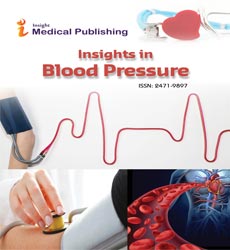Abstract
Effects of Atorvastatin and Carvedilol on Chronic Cyclosporine Nephrotoxicity in Rats
Cyclosporin A (CsA) is an immunosuppressive operator included in the gathering of calcineurin inhibitors which are regularly utilized in the board of transplantation and immune system illnesses. In spite of new treatment methodologies, it is as yet a broadly utilized prescription. In any case, various symptoms limit its utilization in clinical practice, for example, nephrotoxicity, neurotoxicity, hepatotoxicity, hypertension, dyslipidemia and so forth. Cyclosporin A might offer ascent to intense or ceaseless nephrotoxicity. Intense structure results from renal hemodynamic changes and is commonly a reversible condition. Be that as it may, in setting of interminable, all compartments of the kidney show histological modifications which are perpetual. Cyclosporin an instigated interminable aggravation oxidative pressure and apoptosis result in movement of the harm and in the long run interminable renal disappointment creates. At present, it has been demonstrated that all patients utilizing CsA longer than ten years create incessant nephrotoxicity. Thus, the distinguishing proof of pharmacological methodologies is essential to improve long haul results for impeding the movement of incessant nephropathy. Adjacent to the portion decrease or end of the medication, various prescriptions have been proposed to forestall the advancement of interminable CsA nephropathy, including calcium channel blockers, reninangiotensin framework (RAS) inhibitors, endothelin receptor blockers and nitric oxide (NO) antecedents. Studies as of late affirmed that β blockers and statins have against oxidant, hostile to fibrotic and mitigating properties other than their essential point of utilization. In this way, one could accept that utilization of these drugs may give great outcomes additionally in interminable CsA nephropathy. Be that as it may, there is no satisfactory information with respect to their use in this era.
Author(s):
Tatma Byerdon Sbinç
Abstract | PDF
Share this

Google scholar citation report
Citations : 71
Insights in Blood Pressure received 71 citations as per google scholar report
Abstracted/Indexed in
- Google Scholar
- China National Knowledge Infrastructure (CNKI)
- Directory of Research Journal Indexing (DRJI)
- WorldCat
- Secret Search Engine Labs
Open Access Journals
- Aquaculture & Veterinary Science
- Chemistry & Chemical Sciences
- Clinical Sciences
- Engineering
- General Science
- Genetics & Molecular Biology
- Health Care & Nursing
- Immunology & Microbiology
- Materials Science
- Mathematics & Physics
- Medical Sciences
- Neurology & Psychiatry
- Oncology & Cancer Science
- Pharmaceutical Sciences
